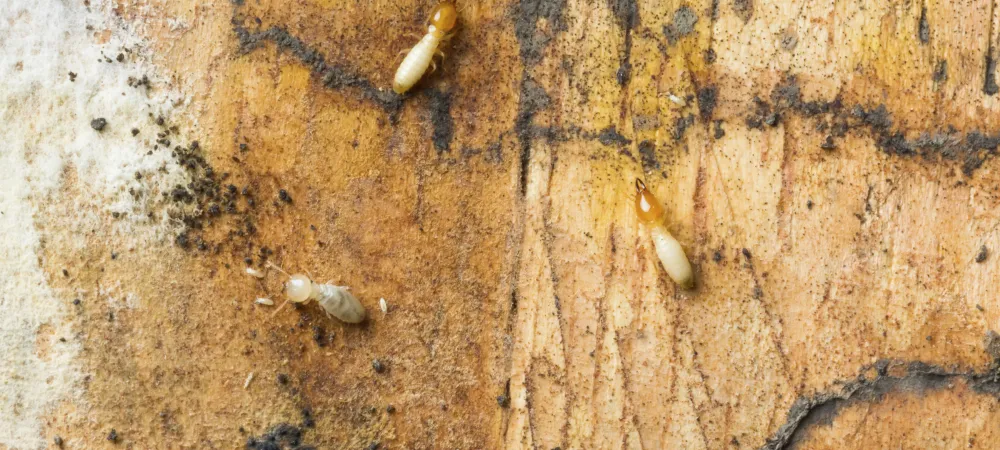What Do Termites Look Like? | Termite Identification Tips

Most of us don't put too much thought into bug identification. If you've seen one beetle, you've seen them all. But, termites are a billion-dollar problem for U.S. property owners. Left alone, these wood-destroying pests can eat you out of house and home--quite literally.
Termites are a unique pest. Most of the time, you won't see them, especially if they are subterranean termites, which are the most destructive termites in the United States. Subterranean termites tunnel through the ground and attack structures from the ground. Most often, the only sign you'll see is the mud tubes these termites leave on foundation walls. But, if you happen to be taking out a wall in your home, or doing some other home improvement projects that require deconstruction of a certain area, you may find these pests crawling around.
From a few feet away, termites look like maggots--a startling sight for sure if you're tearing apart a wall in your home. Termites have the same pale coloring as fly larvae and can seem to wiggle in the same way, but closer examination will quickly dispel this illusion. While termites have the same coloring and a similar look when clumped together in a mass, there are some distinct differences:
- Termites have antennae.
- The head on a termite is noticeably different than its thorax and abdomen, and its small thorax gives the impression that it has a neck--though it does not.
- Termites don't just wiggle, they also walk, sometimes quite quickly for their small size.
- Maggots are baby insects, and appear helpless as they wiggle and writhe. Termites are adult insects that move with purpose.
If you open up an area that has termites in it, the predominant termite you'll see are worker termites. These are the pale insects that look like maggots. Within their ranks, there should also be soldier termites that have more of an earwig appearance to them. Their dark orange head and black pincers make them stand out from the worker termites.
A termite you are not likely to see is the queen. Once she establishes her colony, she remains hidden deep in the ground, producing offspring to aid the development of that colony. On rare occasions, and under the right conditions, a colony can be established in a structure. If this occurs, you may come face to face with a queen. If you do, the first thing you will notice is that she is much larger than all the termites around her. In fact, you may mistake her for something other than a termite.
The reason for her large size is her ever-growing abdomen that is used for birthing. It can grow quite large, while the head and thorax remain the same size. This gives the appearance of an insect trying to squeeze out of a large, light-tan, cocoon with dark brown scorches on the top.
Queens don't start out looking like the description above. Before a nest is established, and before a queen termite becomes a queen, she is one of many winged reproductives that are sent out from a mature colony. These winged reproductives are black in color with prominent white wings.
While a queen and king of an established colony are the least likely termite you'll see, winged reproductives, also called swarmers, are the most likely termite you'll see. They can appear at the entrance to a termite nest, under mulch, on the surface of a tree or stump infested with termites, crawling on window glass and window sills, crawling on woodpiles, and on other areas where there is moist or decaying wood.
Termite swarmers are sometimes mistaken for ant swarmers, though they are distinctly different. The body of a termite swarmer does not look like an ant. An ant has a pinched waist. A termite does not. And the wingtips of an ant have a cleft that separates the right wings from the left wings. The tips of a termite swarmer's wings are rounded, due to the stacking of its wings on top of each other.
If you see termites on your property, call a professional for an immediate inspection. These insects consume wood and cause damage that is difficult--if not impossible--to repair. They should never be left untreated. If you are in our service area, reach out to us for immediate assistance. Witt Pest Management is a leader in termite control. We have been servicing homes and businesses in Pittsburgh since 1908. Let our QualityPro-certified team help you quickly resolve your termite issue.
